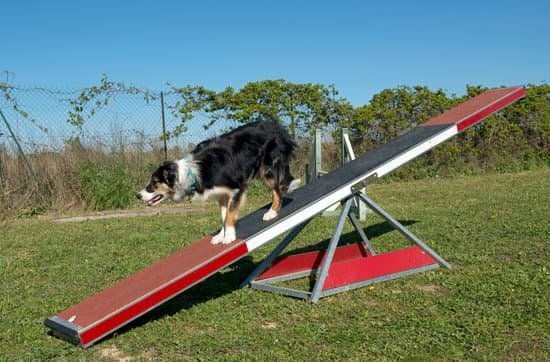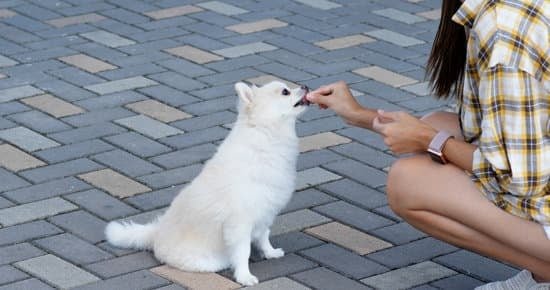Are you struggling with keeping your three dogs in the yard? In this article, we will explore how to train three dogs to stay in the yard. Dogs are naturally curious and energetic, so it’s important to establish boundaries and reinforce good behavior to ensure their safety and the safety of others. Training three dogs at once may seem overwhelming, but with the right techniques and consistency, it’s achievable.
Assessing the Yard is the first step in training three dogs to stay within its boundaries. There may be potential escape routes or hazards that need to be addressed. Establishing Boundaries using physical and visual barriers will create a designated area for the dogs while Consistency in Training and Positive Reinforcement will encourage good behavior from them.
Obedience Training becomes essential as well, where teaching basic commands like stay and come will reinforce boundaries. It’s also important to Address Individual Needs by tailoring training methods to suit each dog’s personality and behavior. Additionally, Supervision and Monitoring are key elements in ensuring progress during training sessions while Troubleshooting any challenges or setbacks that may arise is crucial for successful training.
Assessing the Yard
When training three dogs to stay in the yard, it is crucial to assess the area thoroughly to identify any potential escape routes and hazards. It’s essential to create a safe environment where the dogs can roam freely without the risk of getting lost or injured. Here are some key steps to take when assessing your yard:
1. Check for gaps or weak spots in fencing: Walk around the perimeter of your yard and carefully inspect the fencing for any gaps, holes, or areas where a determined dog could potentially escape. Make sure to mend any weak spots and reinforce the boundaries to prevent any escape attempts.
2. Identify potential hazards: Take note of any potential hazards in your yard, such as toxic plants, sharp objects, or areas with uneven terrain. Remove any hazardous items and make necessary adjustments to ensure a safe environment for your dogs.
3. Assess visibility from outside: Consider how visible your yard is from the outside. If there are areas where passersby can easily see into your yard, it may be tempting for the dogs to try and escape. You may need to use visual barriers such as privacy screens or shrubbery to limit visibility and reduce the temptation for your dogs to wander off.
By taking these steps, you can create a secure and hazard-free environment for training your three dogs to stay in the yard.
Remember that adequate assessment is crucial before you start training three dogs on staying within their boundaries; this will avoid missing out on factors that may lead them astray unknowingly if not addressed first-hand. By assessing every possibility beforehand with precision, you will comfortably predict their movement for better control over them regarding their whereabouts at all times.
Establishing Boundaries
When it comes to training three dogs to stay in the yard, establishing boundaries is crucial for their safety and well-being. One effective method to create a designated area for the dogs is by using physical and visual barriers. These barriers not only help in preventing escape but also provide a clear visual indication of where the dogs are allowed to roam.
One way to establish boundaries is by installing a physical fence around the yard. This can be a traditional wooden or chain-link fence, or even an invisible fence with an underground wire system. The fence should be tall enough and secure enough to prevent the dogs from jumping over or digging under it. Additionally, adding visual cues such as bright flags along the perimeter can further reinforce the boundaries for the dogs.
In addition to physical barriers, using visual markers within the yard can help demarcate the designated area for the dogs. This can include brightly colored garden stakes or planters strategically placed along the perimeter, creating a clear visual indicator of where the dogs are allowed to stay. Consistency in reinforcing these boundaries through both physical and visual means is essential in training three dogs to stay in the yard.
- Install a physical fence around the yard
- Add visual cues such as flags along the perimeter
- Use bright-colored garden stakes or planters within the yard
Consistency in Training
Training three dogs to stay in the yard requires a consistent and structured approach. Establishing a daily routine and sticking to it is essential for effective training. Dogs thrive on routine and consistency, so it’s important to create a schedule that includes regular training sessions, feeding times, potty breaks, and exercise. This helps the dogs understand what is expected of them and reduces confusion during training.
One way to establish consistency in training is by setting specific times for training sessions each day. Whether it’s early in the morning or in the evening, having a set schedule for training helps the dogs anticipate when they will be working on their yard behavior. Additionally, consistency in feeding times and potty breaks can also contribute to their understanding of boundaries and expectations within the yard.
Consistency should also extend to the use of commands and cues during training sessions. Using the same verbal cues and hand signals each time reinforces the dogs’ understanding of what is expected of them. Consistency in the use of rewards and praise is equally important. By consistently rewarding good behavior with treats or praise, the dogs learn that staying in the yard results in positive outcomes, encouraging them to continue following the established boundaries.
| Establishing Consistent Routines | Utilizing Verbal Cues |
|---|---|
| Setting specific times for training sessions | Using consistent verbal cues and hand signals |
| Maintaining regular feeding times and potty breaks | Reinforcing understanding through repetition |
Positive Reinforcement
Training three dogs to stay in the yard requires using positive reinforcement to encourage good behavior. This method focuses on rewarding the dogs when they exhibit the desired behavior, such as staying within the designated boundaries of the yard. By using rewards and praise, you can create a positive association for the dogs, making them more likely to repeat the desired behavior.
One effective way to use positive reinforcement is by giving the dogs treats when they stay within the boundaries of the yard. Choose high-value treats that are particularly enticing for your dogs, and make sure to give them immediately after they display the desired behavior. In addition to treats, verbal praise and affectionate petting can also be powerful rewards for your dogs.
Consistency is key when using positive reinforcement. Make sure that all members of your household are aware of this training method and are consistent in their approach. This will prevent confusion for the dogs and reinforce their understanding of what is expected of them in terms of staying within the yard boundaries.
It’s important to note that while using positive reinforcement, it’s equally important to avoid punishing or scolding your dogs for not staying in the yard. Punishment can create anxiety or fear in your pets, which will not help with their training process. Instead, focus on consistently rewarding and praising good behavior as this will ultimately lead to better results in training your three dogs to stay in the yard.
| Positive Reinforcement Method | Key Points |
|---|---|
| Treats | High-value treats for immediate reward |
| Verbal Praise | Affectionate words as a form of reward for good behavior |
| Consistency | All household members should be consistent in reinforcing positive behavior |
Obedience Training
Teaching “Stay” Command
One of the most important commands to teach when training three dogs to stay in the yard is the “stay” command. This command helps reinforce boundaries and prevents the dogs from wandering off. To begin, start by giving the “stay” command while holding out your hand in a stop gesture.
If the dogs start to move towards you, gently guide them back to their original position and give the command again. Gradually increase the distance between you and the dogs while giving the “stay” command, and reward them with a treat or praise when they successfully remain in place.
Training “Come” Command
In conjunction with teaching the “stay” command, it’s essential to also train the dogs to come when called. This reinforces their understanding of staying within the designated yard area. Start by using a long lead or leash and encourage each dog to come towards you when called.
Reward them with treats and praise for responding to the command. As they become more consistent with coming when called, gradually allow them more freedom without the leash while still reinforcing this behavior with rewards.
Reinforcing Boundaries
During obedience training, it’s important to consistently reinforce boundaries by combining both “stay” and “come” commands. When one dog starts to approach or cross a boundary, use the “stay” command while redirecting them back into the designated yard area.
Similarly, practice calling each dog back using the “come” command if they begin heading towards potential escape routes or hazards outside of the yard. By incorporating these commands into their daily routine, you can effectively reinforce boundaries and ensure that all three dogs stay safely within your yard.
Addressing Individual Needs
Training multiple dogs to stay in the yard can be a challenging task, especially when each dog has its own unique personality and behavior. It is important to tailor the training methods to suit the individual needs of each dog in order to achieve successful results. Here are some effective strategies for addressing the individual needs of each dog during training:
Understanding Personality Traits
Before starting the training process, it’s essential to understand the personality traits of each dog. Some dogs may be more independent and confident, while others may be more submissive or easily distracted. By recognizing these traits, you can customize your training approach to better suit the needs of each dog.
Customizing Commands and Signals
Not all dogs respond to commands and signals in the same way. When training three dogs, it’s important to customize your commands and signals based on what motivates and resonates with each individual dog. For example, one dog may respond well to verbal cues, while another may be more responsive to visual or physical cues.
Adapting Training Techniques
Each dog may require different training techniques based on their behavior patterns. For instance, a high-energy dog may benefit from more vigorous exercise before training sessions, while a timid dog may require a gentler approach. Adapting your training techniques will help create a positive and effective learning environment for all three dogs.
By tailoring training methods to address the individual needs of each dog, you can create a cohesive and harmonious yard experience for all three pets. This customized approach will contribute to successful boundary reinforcement and ensure that each dog feels secure and comfortable within their designated area.
Supervision and Monitoring
Training three dogs to stay in the yard requires constant supervision and monitoring to ensure that they are following the established boundaries and behaving appropriately. It’s important to keep a close eye on the dogs during training and make adjustments as needed to address any issues that may arise. This section will provide insight into the importance of supervision and monitoring in the training process.
During the initial stages of training, it’s crucial to closely observe the behavior of each dog to identify any potential challenges or areas for improvement. This may involve watching their interactions with the designated boundaries, assessing their response to commands, and observing how they react to distractions in the yard. By paying close attention to their behavior, you can make informed decisions about what adjustments may be necessary in their training plan.
In addition to supervision, consistent monitoring of the dogs’ progress is essential for successful training. This involves tracking their behavior over time, noting any improvements or setbacks, and making necessary changes to their training routine.
By closely monitoring their progress, you can identify patterns in their behavior and tailor your approach to meet their individual needs. Whether through regular check-ins or using tools like surveillance cameras, keeping a watchful eye on the dogs during training will help ensure that they are learning effectively and staying safe within the yard.
Troubleshooting
Training three dogs to stay in the yard can be a challenging task, especially when it comes to dealing with potential challenges and setbacks. It’s important to understand that each dog is unique and may require different approaches to training. One common challenge is when one or more of the dogs are particularly stubborn or have a strong prey drive, making it difficult for them to resist the temptation to chase after squirrels or other animals outside the yard.
In such cases, it may be necessary to use additional reinforcement methods such as physical barriers like fences or invisible dog fences, as well as visual barriers like shrubs or hedges, to prevent the dogs from escaping the yard. Additionally, it’s important to ensure that any potential hazards within the yard are addressed, such as toxic plants or small holes under fences that dogs could use as an escape route.
Another common setback in training multiple dogs to stay in the yard is inconsistency in applying training methods among family members or caregivers. This can confuse the dogs and make it harder for them to understand what is expected of them. To address this issue, it’s crucial for everyone involved in caring for the dogs to be on board with the training plan and consistently enforce boundaries and rules when it comes to staying in the yard.
Overall, addressing challenges and setbacks in training three dogs to stay in the yard requires patience, consistency, and a willingness to adapt training methods based on individual needs and behaviors. By taking these factors into consideration and being proactive in troubleshooting potential issues, it is possible to successfully train multiple dogs to stay safely within the yard.
Conclusion
In conclusion, training three dogs to stay in the yard is a challenging yet rewarding endeavor that requires dedication and consistency. By following the steps outlined in this article, pet owners can create a safe and happy environment for their dogs to enjoy outdoor time while staying within the boundaries of the yard.
It is important to remember that every dog is unique and may require different training methods and approaches. Tailoring the training to accommodate the individual needs and behaviors of each dog will ultimately lead to greater success in keeping them in the yard.
Consistency is key when it comes to training multiple dogs. Establishing a daily routine, using positive reinforcement, and addressing any challenges or setbacks as they arise are all essential components of ensuring that the dogs understand and adhere to the boundaries set for them.
In summary, with patience, perseverance, and the right techniques, it is indeed possible to train three dogs to stay in the yard. By celebrating progress along the way and reinforcing consistent training practices, pet owners can create a harmonious environment where their beloved pets can enjoy outdoor freedom while remaining safe and secure.
Frequently Asked Questions
How Do You Teach a Dog to Stay in the Yard?
Teaching a dog to stay in the yard involves consistent training and positive reinforcement. Start by using a long leash to guide them back when they stray and reward them when they stay within the boundaries.
How Do You Stop a Dog From Leaving the Yard?
Preventing a dog from leaving the yard requires creating physical barriers like fences or walls that are tall enough to prevent them from jumping over. It also involves training and consistently reinforcing boundaries.
How Do You Train Three Dogs at the Same Time?
Training three dogs at the same time can be challenging, but it’s doable with patience and consistency. It’s important to work with each dog individually while also teaching them together as a group. Using different commands for each dog can help avoid confusion.

Welcome to the blog! I am a professional dog trainer and have been working with dogs for many years. In this blog, I will be discussing various topics related to dog training, including tips, tricks, and advice. I hope you find this information helpful and informative. Thanks for reading!





